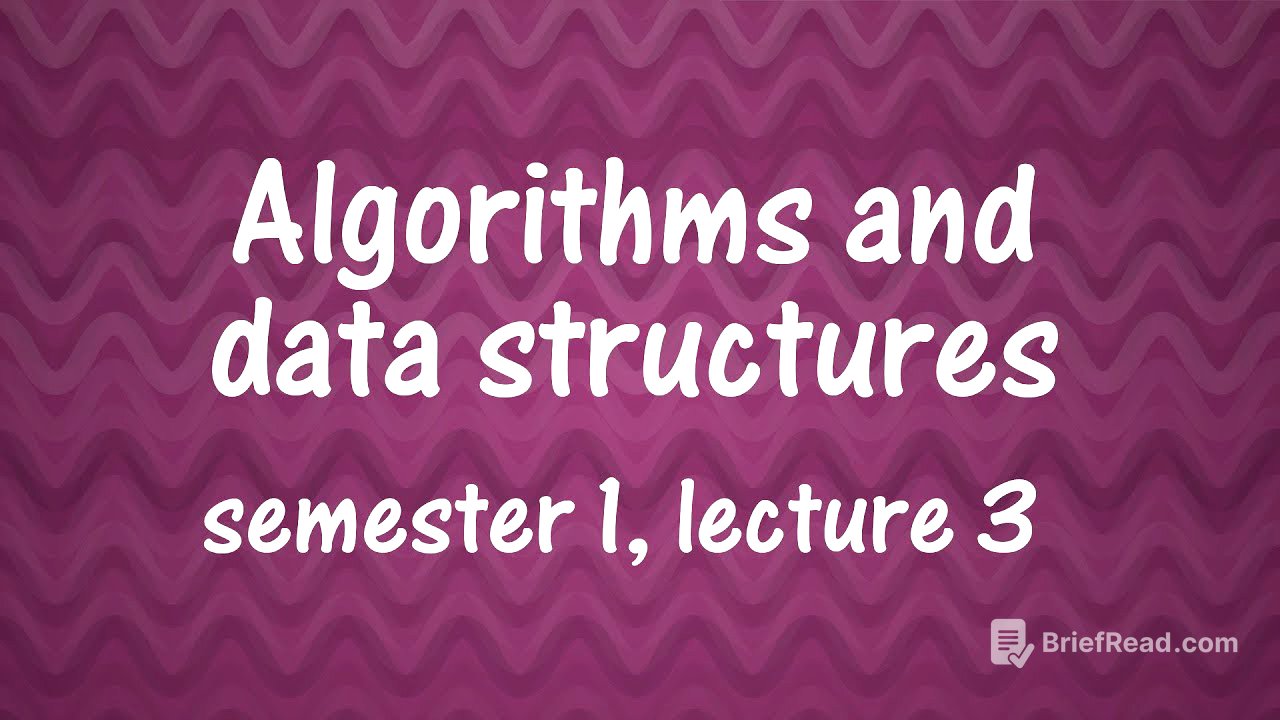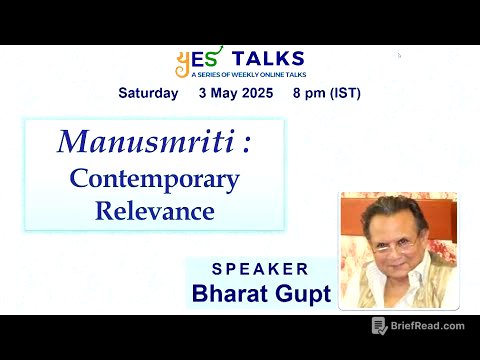TLDR;
This lecture covers the quicksort algorithm, randomized algorithms, and order statistics. It explains how quicksort works, its implementation, and potential issues with equal elements. The lecture also discusses how to measure the time complexity of randomized algorithms, proving that quicksort has an average time complexity of O(n log n). Additionally, it introduces a deterministic algorithm for finding the kth smallest element in an array in linear time, contrasting it with the randomized approach.
- Introduction to randomized algorithms and quicksort
- Implementation and optimization of quicksort
- Time complexity analysis of randomized algorithms
- Deterministic algorithm for order statistics in linear time
Introduction to Randomized Algorithms and Quicksort [0:52]
A randomized algorithm incorporates random numbers as an additional input to potentially solve problems faster. The quicksort algorithm, the first randomized algorithm discussed, involves picking a random element 'x' from an array and splitting the array into two parts: elements less than 'x' on the left and elements greater than or equal to 'x' on the right. This process is then recursively applied to both parts until the array is sorted. The splitting of the array into two parts can be done in linear time by iterating through the array and comparing each element to 'x'.
Quicksort Implementation and Optimization [5:16]
The quicksort algorithm can be optimized by using the same array for the two halves instead of creating new arrays. The algorithm involves a recursive procedure that takes a segment of the array defined by its left (l) and right (r) borders. If the size of the array segment is less than or equal to one, it is already sorted. Otherwise, a random element is chosen, and the array is split into two parts using a variable 'm' to track the boundary between elements less than 'x' and elements greater than or equal to 'x'. The procedure is then called recursively for the two parts.
Addressing Issues with Equal Elements in Quicksort [12:47]
A significant problem with the basic quicksort implementation arises when there are several equal elements in the array. In such cases, the algorithm may not work correctly, potentially leading to infinite recursion. To improve the procedure, the array can be split into three parts: elements less than 'x', elements equal to 'x', and elements greater than 'x'. By doing this, the recursive procedure only needs to be called for the parts with elements less than or greater than 'x', while the elements equal to 'x' stay in place.
Time Complexity Analysis of Randomized Algorithms [18:39]
The time complexity of randomized algorithms is measured using the mathematical mean of the time complexity rather than the worst-case scenario. For quicksort, the worst-case time complexity is O(n^2) when the picked element is always the minimum or maximum. However, the average time complexity is O(n log n). This is proven by considering that every third pick will result in a good split, dividing the array into parts no more than two-thirds of n.
Practical Considerations for Quicksort [40:51]
In practice, the efficiency of quicksort can be increased by finding ways to pick a better element with a higher probability of being in the middle. One approach is to pick three random elements and select the median of those three as 'x'. This increases the likelihood that 'x' will be closer to the center of the array, decreasing the constant factor in the time complexity.
Order Statistics Problem and Randomized Solution [45:37]
The order statistics problem involves finding the element with a given index k in a sorted array. A naive solution is to sort the array first, which takes O(n log n) time. However, a faster randomized algorithm exists. This algorithm picks a random element 'x', splits the array into two parts, and then recursively calls itself on the part that contains the element with index k.
Implementation and Time Complexity of Randomized Order Statistics [50:58]
The randomized algorithm for order statistics involves a recursive procedure that takes a segment of the array and an index k. If the array has size one, it returns the element. Otherwise, it picks a random element 'x', splits the array into two parts, and then makes a recursive call on either the left or right part, depending on whether k is less than or greater than the index m. The key difference from quicksort is that only one recursive call is made, resulting in a linear time complexity of O(n).
Deterministic Algorithm for Order Statistics [59:25]
A deterministic algorithm can achieve the same linear time complexity for the order statistics problem without using randomization. This algorithm, invented by five people, involves splitting the array into groups of five elements, finding the median element in each group, and then finding the median of these medians. This median of medians is used as the pivot 'x' to split the array. The algorithm then recursively calls itself on the appropriate part of the array.
Detailed Steps and Analysis of the Deterministic Algorithm [1:04:20]
The deterministic algorithm involves several steps: splitting the array into blocks of size five, finding the median in each block, and finding the median of these medians. To find the median of medians, the same algorithm is called recursively. The array is then split into two parts based on the median of medians, and a recursive call is made on the part containing the kth element. The maximal possible size of this part is 7n/10, leading to a linear time complexity.









